Sahiwal: The City Of Cattle
Sahiwal also known as Montgomery, is the 21st largest city in Pakistan, and it is also the capital of Sahiwal Division and Sahiwal District. Sahiwal is about 100 km from Faisalabad and 180 km from Lahore, and it lies between Multan and Lahore. Sahiwal is connected to the northeast of Lahore and southwest of Multan by the road and railway lines. The Sahiwal city is a populated region, and it lies between Ravi and Sutlej river. The main crops of Sahiwal are tobacco, wheat, potatoes, cotton, oil seeds and the legume. Lacquered woodwork and cotton goods are also manufactured in this city. It is also famous for the textile and carpet production. Many dairy products, food, pharmaceuticals and cooking oils are also manufactured in Sahiwal.
learn more aboutPakistan.
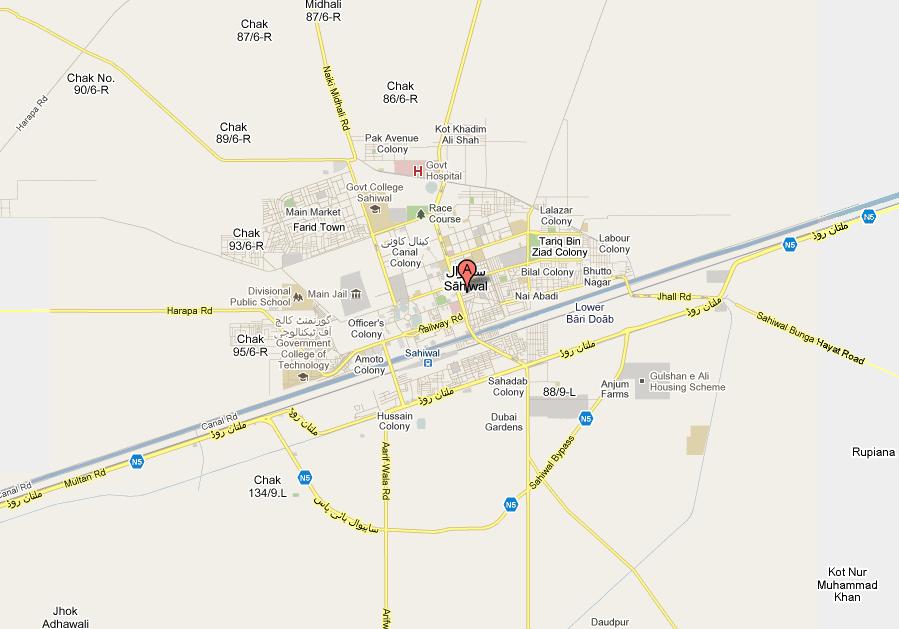
History of Sahiwal
Sahiwal city was founded in 1865, and was named Montgomery for Sir Robert Montgomery. This city is home to the pastoral Jats, who maintains the independence against the rulers of northern India. The sites of Harappa and Kot Kamalia contain antique bricks, large mounds and other ruins of the Indus Valley Civilization, while other villages and ancient cities ruins lie to scatter with the river bank. During the partition of 1947, this city was allocated to Pakistan by Punjab Boundary Commission. This decision was on the basis of the majority of Muslims in the area. The Sikhs and Hindus minority migrated to India and Muslim minority migrated from India settled in the Sahiwal. This city acquires its name Sahiwal in 1969.

Location
Sahiwal is in the southeast of the province Punjab. From Multan, it is about 73-06 longitude and 30-40 north latitude. It is 150 m (500 ft.) above the sea level and forms a parallelogram lying SW-NE along the Ravi River. It is 45 km from north-west and 100 km from east-west boundary of the Sahiwal Division, TobaTek Singh district and Faisalabad Division. Khushak Bias, the dry river separates it from Pakpattan District. In the east of the Division there is District Okara. Vehari and Khanewal District create the boundaries with the Division. District Pakpattan is on the southern side of Sahiwal, the shrine of Sufi Fareed Shaker Ganj is in Pakpattan. The Sahiwal district Comprises 1371 villages and 3 towns. The Population of Sahiwal was 360,446 in 1860, 426,529 in 1881, 499,521 in 1891 and 497,706 in 1901. In 1901, 28% of the population were Sikhs and Hindus while 72% population was Muslims. In 2021, the metro area population of Sahiwal was 444,000, with the increase of 0.3% from 2022. In 2020, the metro area population of Sahiwal was 431,000.
Administration
District Sahiwal consist of 531 villages in two subdivisions, Sahiwal and Chichawatni. The area of Sahiwal division is 301 km². It contains many subtowns like Yousaf Wala, Noor shah, Ghaziabad, Qadirabad, Kassowal, Iqbal Nagar and Harappa. The railway and highway services connect transport to all over the Pakistan.
Climate
The climate of Sahiwal is hot reaching 46-51 degree C maximum in summers. In winter temperature down to 5-10 degree C. The soil of Division Sahiwal is very fertile. The average rainfall in Sahiwal Division is about 2000 mm.
Sahiwal Dairy Cattle Breed
The city Sahiwal is famous for the best dairy breed of humped cattle, similar to Butana breeds and Red Sindhi breeds. Sahiwal is also known as the city of cattle. These humped cattle breed is originated along the Indo-Pakistan border in dry Punjab. These breed was once kept by herdsmen also known as "Jaanglees" in large herds, later their numbers dripped due to the introduction of irrigation in the region and farmers used them as dairy animals and draft.
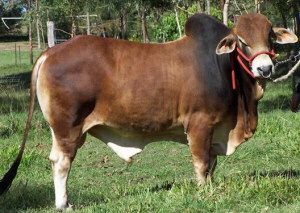
The cattle breed of Sahiwal is known as one of the best dairy breeds in Pakistan and India. This cattle breed is heat-tolerant, resistant to external and internal parasites and tick-resistant. The average 2280 kg of milk of cows with suckling a calf and much more milk yields have been recorded in this breed. Cows due to their high milk production and heat tolerance, have been exported to many countries of Africa, Asia and Caribbean and many other countries around the globe. Oxen are used for slow work as they are slow and docile.
Their color can range from red to reddish brown with white on the neck and the underline. In males, the color of head, tail and legs darkens toward the extremities. Sahiwal cattle breed arrived in New Guinea and then in Australia.
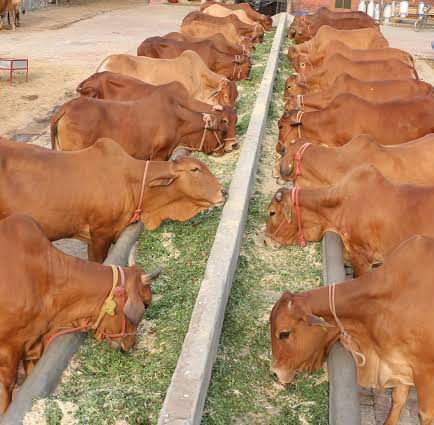
The Sahiwal breed was initially selected in Australia as dual-purpose breed. This breed played an important role in two Australian tropical diary breed development, the Australian Frisian Sahiwal and the Australian milking Zebu or humped cattle. It is now used for beef production in Australia, as they cross high grade sires with Bos Taurus animals produced with lean quality and desirable fat. Among all zebu breeds Sahiwal breed is he the heaviest milker and well - developed Sahiwal breed sires small, fast-growing calves, it is also noted for its hardiness under adverse climatic situations.

Harappa
Harappa is one of the ancient civilization of 3300 B. C according to an archeological evidence. Harappa is 24 km (15 miles) southwest in suburb of Harappa, the northern city of Indus Valley Civilization. It is the largest village of Sahiwal city, and is about 24 km (15 miles) from the capital of district. According to archeologists, as Mohenjo-Daro dominates the lower Indus valley and Ganweriwal has been the urban center of the present Rajasthan, Harappa in ancient times was the urban center of upper Indus region. Harappa was excavated by Alexander Cunningham, an archaeologist in 1872-73. After two decades Brick Robbers find Indus seal of an unknown origin and carried off the remains of the city.

In 1920, Rai Bahadur Daya Ram Sahni started the first excavation at Harappa. In Indus Valley civilization, his excavation at Mohenjo-Daro is known as one of the earliest urban civilization in the subcontinent. Later in the decade an archaeologist Madho Sarup Vats followed Rai Bahadur Daya Ram Sahni, and this excavation continued in the 1930s. Sir Mortimer Wheeler in 1946, founded first pre-Indus Valley civilization deposits (Kot Dijian) by the excavation of fortification walls. In 1947 after independence, Mohammed Rafique Mughal an archaeologist of the Archaeologist Survey Department excavated Harappa in 1966.
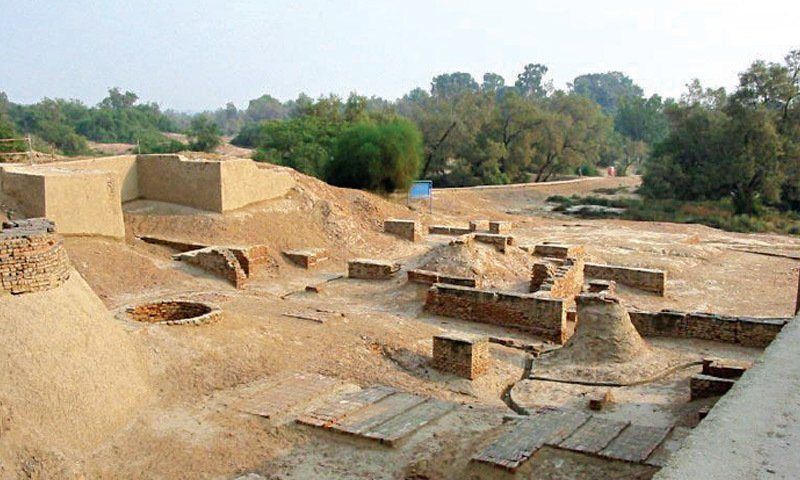
The first systematic and multidisciplinary excavation of Indus Valley region begun in 1986, by HARP (Harappa Archaeological Project) under the direction of Jonathan Mark Kenoyer and George F. Dales. The mounds of the lower city towards the southwest and east and the citadel were the main features of the plan that have already been indicated. Toward the north, a hollow belt of green crops marks an old bed of river Ravi, which flows 10 km (6 miles) between the riverbed and the citadel. The town planning of Mound F contain much to the south of citadel, the outlying hills and the post Harappan cemetery and the Harappan cemetery.
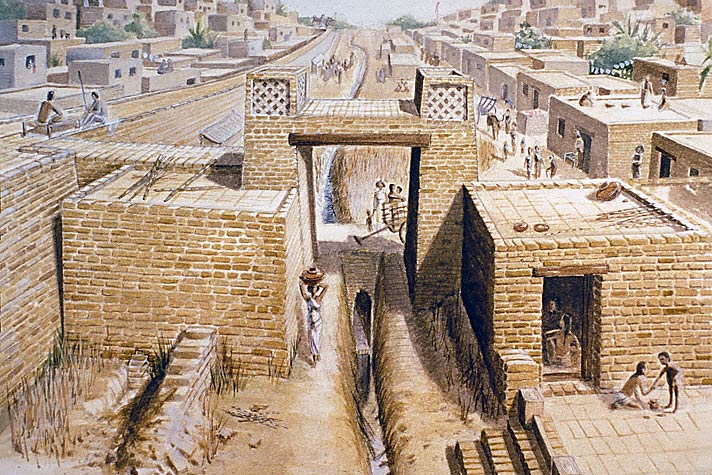
The sporadic digging to the south has been carried out in G area, but Mound E ragged and its surroundings are unexplored, and most of the site still unexcavated. Go back to 5300 B.C. the earliest deposits of the area seems to be continuously inhabited ever since.

Twin City
The town of Rochdale in Manchester, NW England, is twinned with Sahiwal. About 8% of the Rochdale's population is from Asia origin, most of them have links with Pakistan. In 1998, Sahiwal and Rochdale agreed on the twinning arrangement between them.
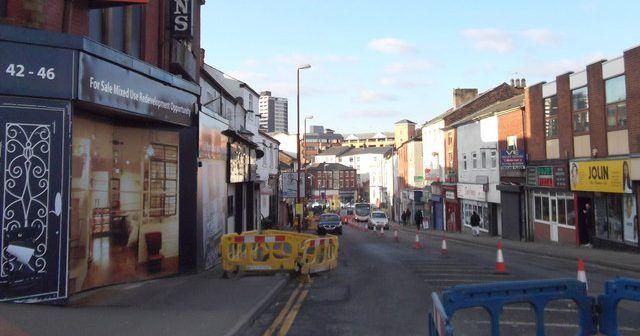
Education
The remarkable educational institute of Sahiwal Include:-
- University of Sahiwal
- COMSATS University, Sahiwal Campus
- Punjab College of Science
- The Superior College
- The Educators
- Sahiwal Medical College
- Army Public Schools & Colleges System (APSCS)
- Divisional Public School and College
- The City School
- Government Postgraduate College Sahiwal
- Barani Institute of Sciences, Sahiwal
- Government College of Technology Sahiwal
- Beaconhouse School System
- Quaid-e-Azam College of Engineering and Technology, Sahiwal
- Bloomfield Hall School
Notable People
- Mushtaq Ahmed, former test cricketer
- Manzoor Elahi, former test cricketer
- Kunwar Mohinder Singh Bedi Sahar, Urdu Poet
- Saieen Zahoor, Sufi musician
- Rana Mohammad Hanif Khan, politician and former Finance Minister of Pakistan
- Majeed Amjad, Urdu poet
- Attash Durrani, Urdu writer and Scholar
- Nazir Naji journalist and Urdu columnist for the Daily Dunya
- Tariq Aziz, television anchor
- Brigadier Kuldip Singh Chandpuri, Indian Army Officer
- Emmanuel Neno, Christian author and translator
- Nouraiz Shakoor, politician and former Federal minister
- Dildar Pervaiz Bhatti, (TV artist, compere, comedian, anchor)
Sports
Sahiwal has produced many cricketers, Mushtaq Ahmed, Saleem Elahi, Zahoor Elahi and Manzoor Elahi.

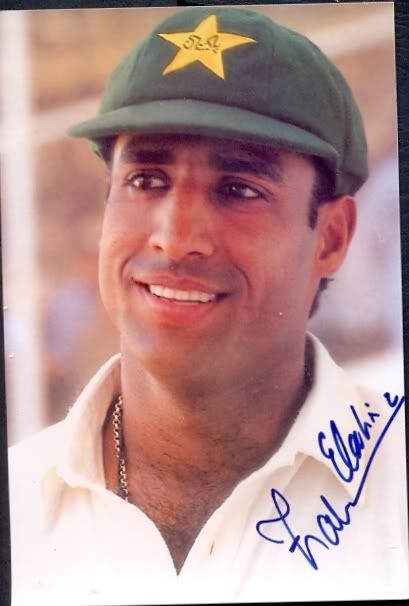

Tourists Attractions In Sahiwal
The famous tourists attraction or tourism spots in Sahiwal division are following:-
1. Yadgar Monument Sahiwal
Yadgar Monument is located near Railway road Sahiwal, Punjab.
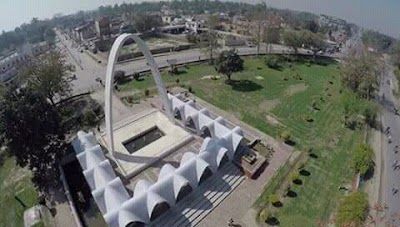
2. Zafar Ali Cricket Stadium
Zafar Ali Cricket Stadium is a multi purpose stadium in Sahiwal used for List A cricket games and first class games from 1955-1995. It has the capacity of 10,000 people.

3. Harappa Museum
It is an archaeological museum in Harappa Sahiwal. It is approximately 7 km from Harappa railway station. Harappa museum is founded as a small site museum in 1926. In 1967, Harappa museum is shifted to its present building, constructed by the Government of Pakistan.

4. Sahiwal Coal Power Plant




